Photographs: Fabrizio Bensch/Reuters
Beating the United States, China has made a giant leap in the field of supercomputers.
However, India has no supercomputers in the top 10 list. Two supercomputers from India feature among the top 100 fastest supercomputers in the world.
The supercomputer at the Indian Institute of Tropical Meteorology (IITM) is ranked 36th while ParamYuva II at the Centre for Development of Advanced computing (C-DAC) has 69th rank.
Supercomputers are super achievers, giving highest and most enviable performance at any given time.
Cray 1, released in 1975, is considered to be the first real supercomputer.
Supercomputers help in computational science, quantum mechanics, weather forecasting, climate research, oil and gas exploration, molecular modeling and physical simulations.
Take a look at the world’s top 10 supercomputers…
Top 10 supercomputers, China beats US
Image: Tianhe-2.Photographs: Courtesy, TOP500 list.
Tianhe-2
Rank: 1
Country: China
Cores: 3,120,000
Rmax (TFlop/s): 33,862.7
Rpeak (TFlop/s): 54,902.4
Power (kW): 17,808
Developed by the Chinese government-run National University of Defence Technology, Tianhe-2 is the world’s fastest supercomputer with a performance of 33.86 petaflop/s on the Linpack benchmark, according to the 41st edition of the TOP500 list of the world’s most powerful supercomputers.
Also called Milky Way-2, it will be deployed at the NationalSupercomputerCenter in Guangzho, China, by the end of the year.
Tianhe-2 has 16,000 nodes, each with two Intel Xeon IvyBridge processors and three Xeon Phi processors for a combined total of 3,120,000 computing cores.
...
Top 10 supercomputers, China beats US
Image: TitanTitan
Rank: 2
Country: United States
Cores: 5,60,640
Rmax (TFlop/s): 17,590.0
Rpeak (TFlop/s): 27,112.5
Power (kW): 8,209
Titan, a Cray XK7 system installed at the U.S. Department of Energy’s (DOE) Oak Ridge National Laboratory which was earlier the fastest supercomputer, is now ranked at second in the list.
Titan achieved 17.59 petaflop/s on the Linpack benchmark using 261,632 of its NVIDIA K20x accelerator cores.
Titan is one of the most energy efficient systems on the list, consuming a total of 8.21 MW and delivering 2,143 Mflops/W.
...
Top 10 supercomputers, China beats US
Image: Sequoia.Photographs: Courtesy, Lawrence Livermore National Laboratory
Sequoia
Rank: 3
Country: United States
Cores: 1572864
Rmax (TFlop/s): 17,173.2
Rpeak (TFlop/s): 20,132.7
Power (kW): 7,890
Sequoia, an IBM BlueGene/Q system installed at DOE’s Lawrence Livermore National Laboratory, also dropped one position and is at third position now.
Sequoia was first delivered in 2011 and has achieved 17.17 petaflop/s on the Linpack benchmark using 1,572,864 cores.
It is also one of the most energy efficient systems on the list, consuming a total of 7.84 MW and delivering 2,176.6 Mflops/W.
...
Top 10 supercomputers, China beats US
Image: K computerPhotographs: Courtesy, AICS.
K computer
Rank: 4
Country: Japan
Cores: 7,05,024
Rmax (TFlop/s): 10,510.0
Rpeak (TFlop/s): 11,280.4
Power (kW): 12,660
Fujitsu’s 'K computer' installed at the RIKEN Advanced Institute for Computational Science (AICS) in Kobe, Japan, has a performance of 10.51 Pflop/s on the Linpack benchmark using 705,024 SPARC64 processing cores.
...
Top 10 supercomputers, China beats US
Image: Mira.Photographs: Courtesy, Argonne National Laboratory
Mira
Rank: 5
Country: United States
Cores: 4,62,462
Rmax (TFlop/s): 5,168.1
Rpeak (TFlop/s): 8,520.1
Power (kW): 4,510
Mira will provide billions more processor-hours per year to engineers and researchers to run complex simulations of everything from nuclear reactors to blood vessels.
A second BlueGene/Q system, Mira, installed at Argonne National Laboratory with 8.59 petaflop/s on the Linpack benchmark.
...
Top 10 supercomputers, China beats US
Image: StampedePhotographs: Courtesy, Texas Advanced Computing Center
Stampede
Rank: 6
Country: United States
Cores: 4,62,462
Rmax (TFlop/s): 5,168.1
Rpeak (TFlop/s): 8,520.1
Power (kW): 4,510
One of the largest computing systems in the world for open science research, Stampede at the Texas Advanced Computing Center provides computational capabilities to enhance science and technology research, from highly parallel algorithms to high-throughput computing, scalable visualisation and next generation programming languages.
...
Top 10 supercomputers, China beats US
Image: JuqueenPhotographs: Courtesy, Forschungszentrum Juelich
Juqueen
Rank: 7
Country: Germany
Cores: 4,58,752
Rmax (TFlop/s): 5,008.9
Rpeak (TFlop/s): 5,872.0
Power (kW): 2,301
Three of the top ten supercomputers in Europe are in Germany. Juqueen installed at the Forschungszentrum Juelich (FZJ), is five times more energy efficient than its predecessor, Jugene.
A direct water cooling system that removes heat from the processors is part of the energy-efficient blueprint.
...
Top 10 supercomputers, China beats US
Image: VulcanPhotographs: Courtesy, Lawrence Livermore National Lab
Vulcan - BlueGene/Q
Rank: 8
Country: United States
Cores: 3,93,216
Rmax (TFlop/s): 4,293.3
Rpeak (TFlop/s): 5,033.2
Power (kW): 1,972
IBM’s BlueGene/Q offers computational scientists a scalable high-performance computing (HPC) platform.
Lawrence Livermore National Lab uses this supercomputer to support unclassified, collaborative work with industry.
...
Top 10 supercomputers, China beats US
Image: Super MUCPhotographs: Courtesy, Leibniz Rechenzentrum
Super MUC
Rank: 9
Country: Germany
Cores: 1,47,456
Rmax (TFlop/s): 2,897.0
Rpeak (TFlop/s): 3,185.1
Power (kW): 3,423
SuperMUC installed at Leibniz Rechenzentrum delivers outstanding computing power to European researchers to further research in science and engineering.
SuperMUC system’s performance will be enhanced by 2015.
...
Top 10 supercomputers, China beats US
Image: Super MUCPhotographs: Courtesy, Leibniz Rechenzentrum
Tianhe-1A
Rank: 10
Country: China
Cores: 1,86,368
Rmax (TFlop/s): 2,566.0
Rpeak (TFlop/s): 4,701.0
Power (kW): 4,040
The operating system of Tianhe-1 is 64-bit Kylin Linux, which is oriented to high-performance parallel computing optimisation, supports power management and high-performance virtual computing zone.
It is installed at the National Supercomputer Centre, Tianjan.

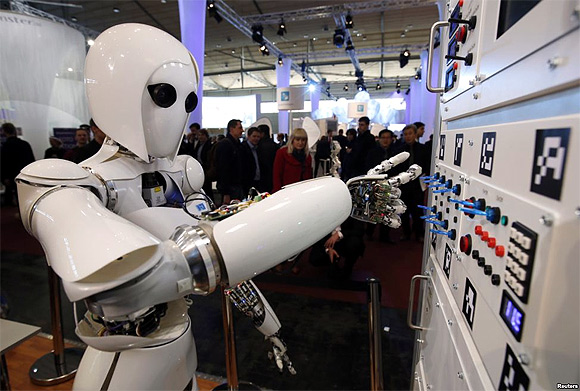
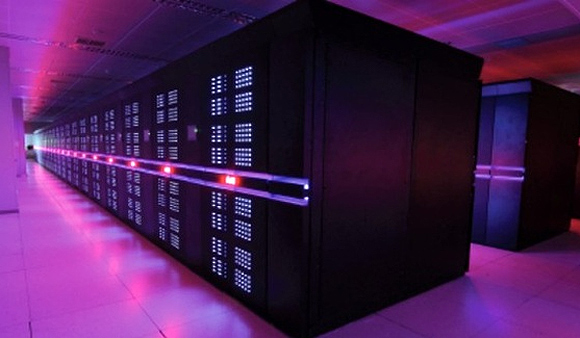
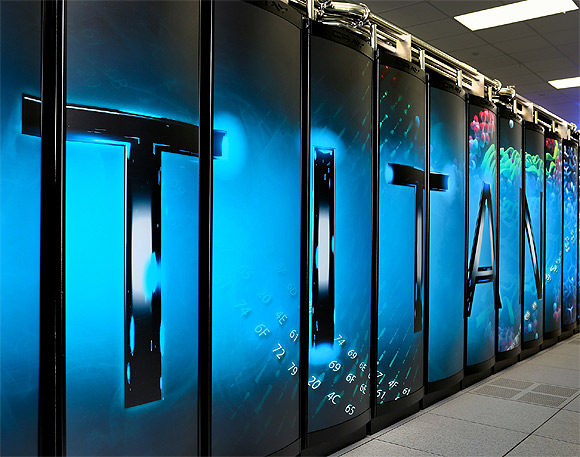

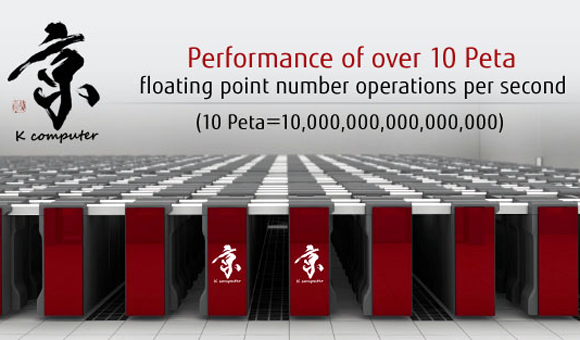

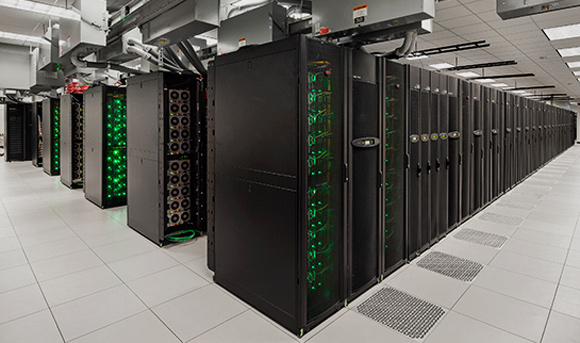
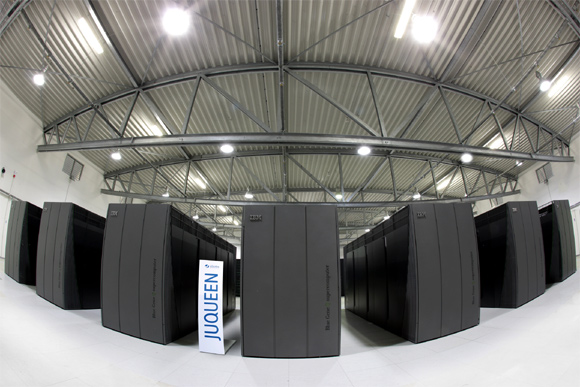

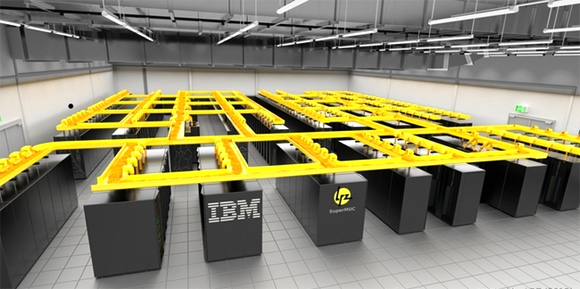
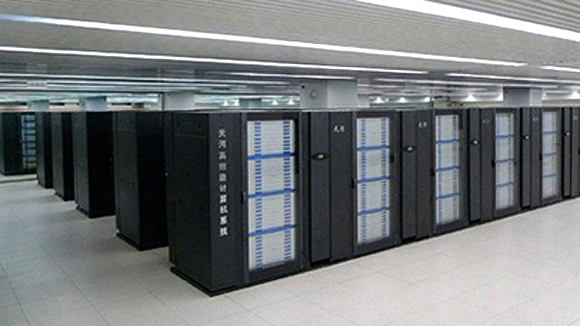
article